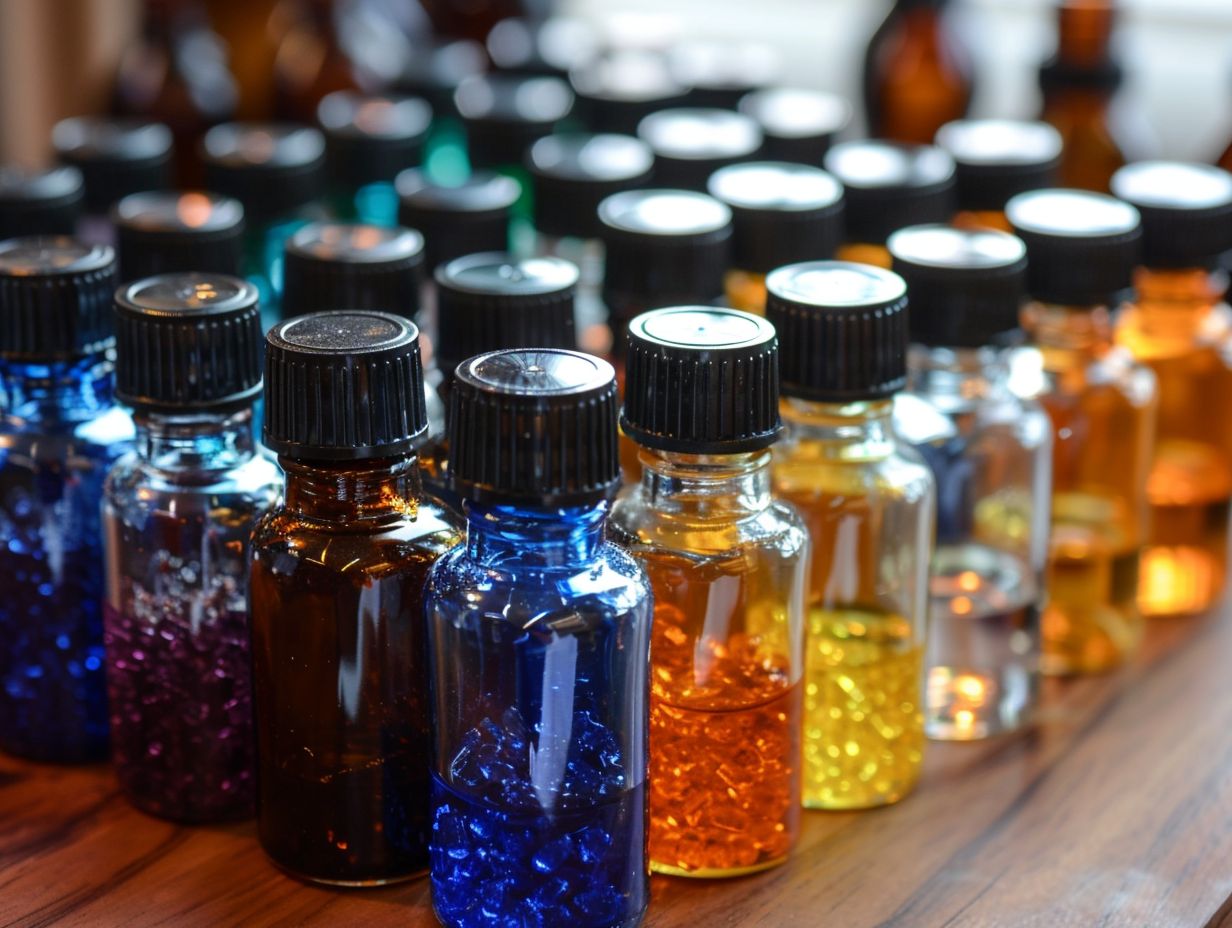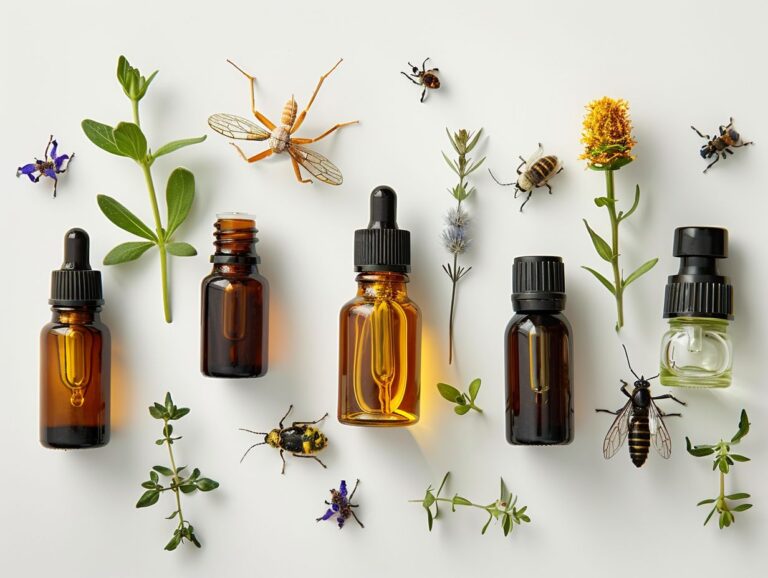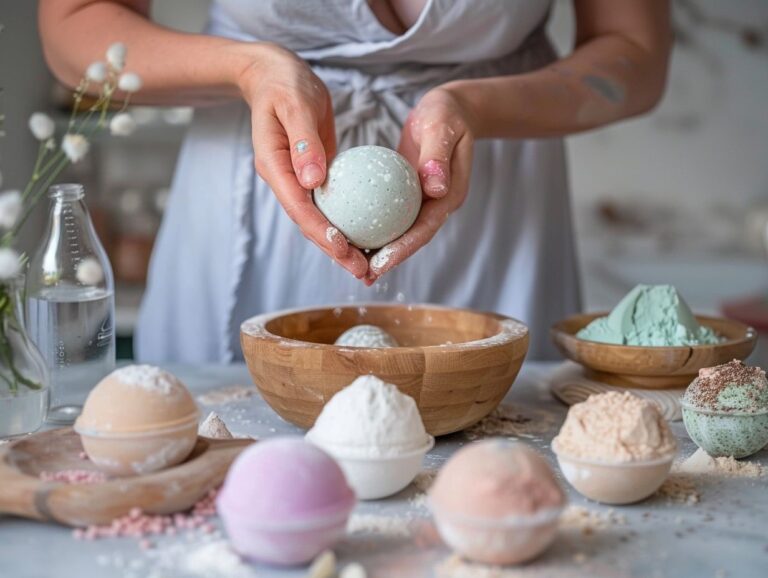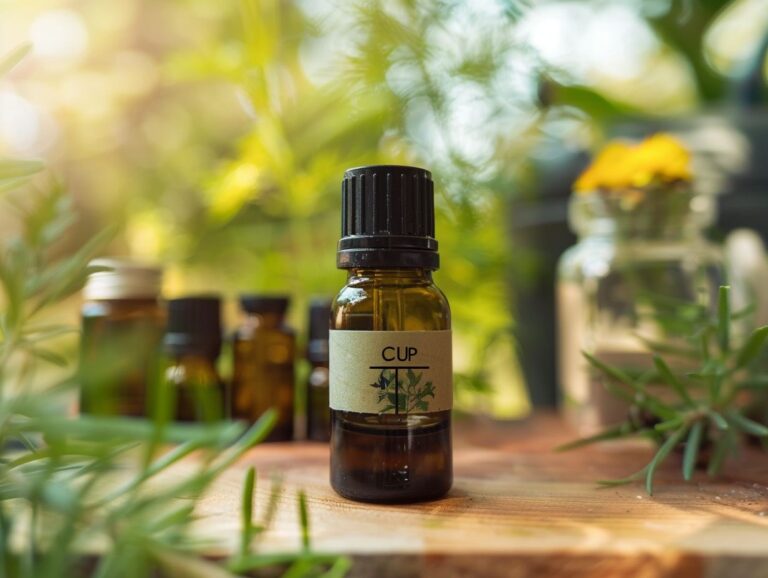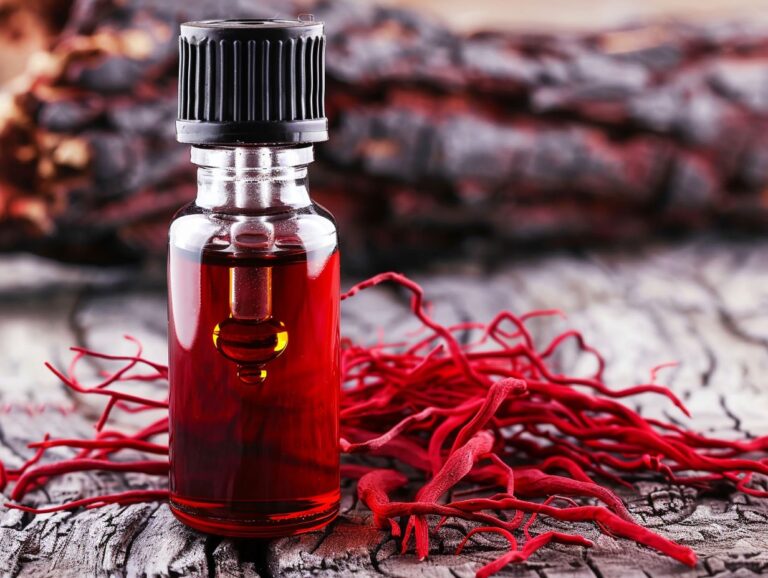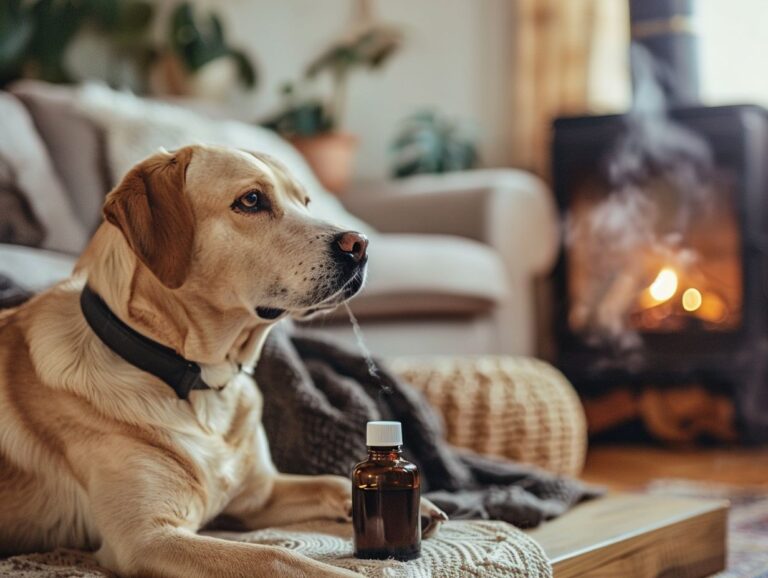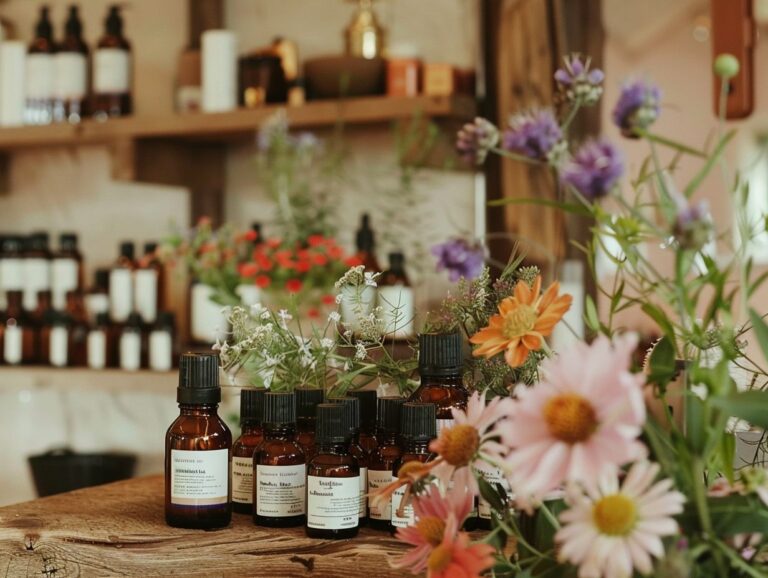Do Essential Oils Need to Be in Dark Bottles
Essential oils have been used for centuries for their aromatic and therapeutic properties.
Have you ever wondered why they are always stored in dark bottles?
In this article, we will explore the reasons behind this practice, including understanding light degradation and the benefits of using dark bottles.
We will also discuss the best types of bottles for storing essential oils and how to properly store them for maximum potency.
Let’s dive in and uncover the importance of dark bottles for essential oils!
Key Takeaways:
What Are Essential Oils?
Essential oils are concentrated liquids derived from plants that contain aromatic compounds. They are commonly stored in glass bottles to maintain their potency and purity.
During the extraction process of essential oils, various methods such as steam distillation, cold pressing, or solvent extraction are employed to capture the aromatic essence of plants. Once extracted, these oils are highly versatile and widely used in aromatherapy, skincare, haircare, and even for household cleaning. The benefits of essential oils range from promoting relaxation, reducing stress, boosting immunity, to providing natural alternatives for skincare concerns. Proper storage in glass bottles is crucial as it prevents contamination, exposure to light, and oxidation which can degrade the quality of the oils over time.
Why Are Essential Oils Stored in Dark Bottles?
Essential oils are commonly stored in dark bottles to protect them from UV light exposure, which can degrade their quality over time.
UV light degradation can lead to the breakdown of the chemical compounds in essential oils, altering their therapeutic properties and reducing their effectiveness. By using dark bottles, such as amber-colored glass, UV protection is enhanced, preserving the oils’ potency and fragrance.
Plus dark bottles, protective carton displays play a crucial role in maintaining the quality of essential oils. These cartons provide an extra layer of defense against light exposure and temperature fluctuations, creating a stable environment for storage.
What Is Light Degradation?
Light degradation refers to the process where exposure to UV light causes chemical reactions in essential oils, leading to a loss of potency and quality.
This degradation occurs due to the interaction between UV radiation and the sensitive compounds present in the oils. When UV rays penetrate the bottle, they initiate a chain of reactions that break down the chemical structure of the oils. As a result, the beneficial properties of the essential oils diminish, affecting their therapeutic efficacy.
Protective labels play a crucial role in preventing this degradation by acting as a barrier that blocks harmful UV rays from reaching the oils. These labels shield the bottles, preserving the integrity and potency of the oils for longer periods.
What Happens When Essential Oils Are Exposed to Light?
When essential oils are exposed to light, several negative effects occur, including oxidation, phototoxicity, and a decline in aroma and therapeutic properties.
Exposure to light triggers a chain of chemical reactions within the essential oils, leading to oxidation. This process can alter the chemical composition of the oils, diminishing their beneficial qualities and potentially causing skin irritation. Certain oils become phototoxic when exposed to sunlight, increasing the risk of skin damage or hypersensitivity reactions upon skin contact. Proper usage and storage are crucial to preventing these undesired outcomes. Utilizing dispensing systems that shield oils from light exposure helps maintain their potency and effectiveness over time.
Oxidation
Oxidation is a chemical reaction that breaks down the molecular structure of essential oils when they come into contact with oxygen, leading to reduced efficacy and aroma.
The presence of oxygen causes the essential oil molecules to undergo oxidation, resulting in the formation of harmful by-products that degrade their quality over time. As the oils oxidize, their beneficial properties diminish, affecting their therapeutic benefits.
Innovative dispensing systems like the EuroDrop system have been designed to mitigate oxidation risks by minimizing the oils’ exposure to air. By controlling the amount of oxygen that comes into contact with the oils during dispensing, such systems help preserve the oils’ freshness and potency, ensuring longer shelf life and optimal performance.
Phototoxicity
Phototoxicity occurs when certain essential oils react with sunlight, causing skin sensitivity and potential burns if not properly handled.
This reaction is triggered by specific chemical compounds within the essential oils that become activated when exposed to UV rays. In essence, it means that applying phototoxic oils to the skin and then exposing that skin to sunlight can lead to adverse reactions.
One effective measure to mitigate this risk is the use of child-resistant caps on essential oil bottles. These caps play a crucial role in preventing accidental exposure to sunlight, especially in households with children who may unknowingly handle the oils.
Loss of Aroma and Therapeutic Properties
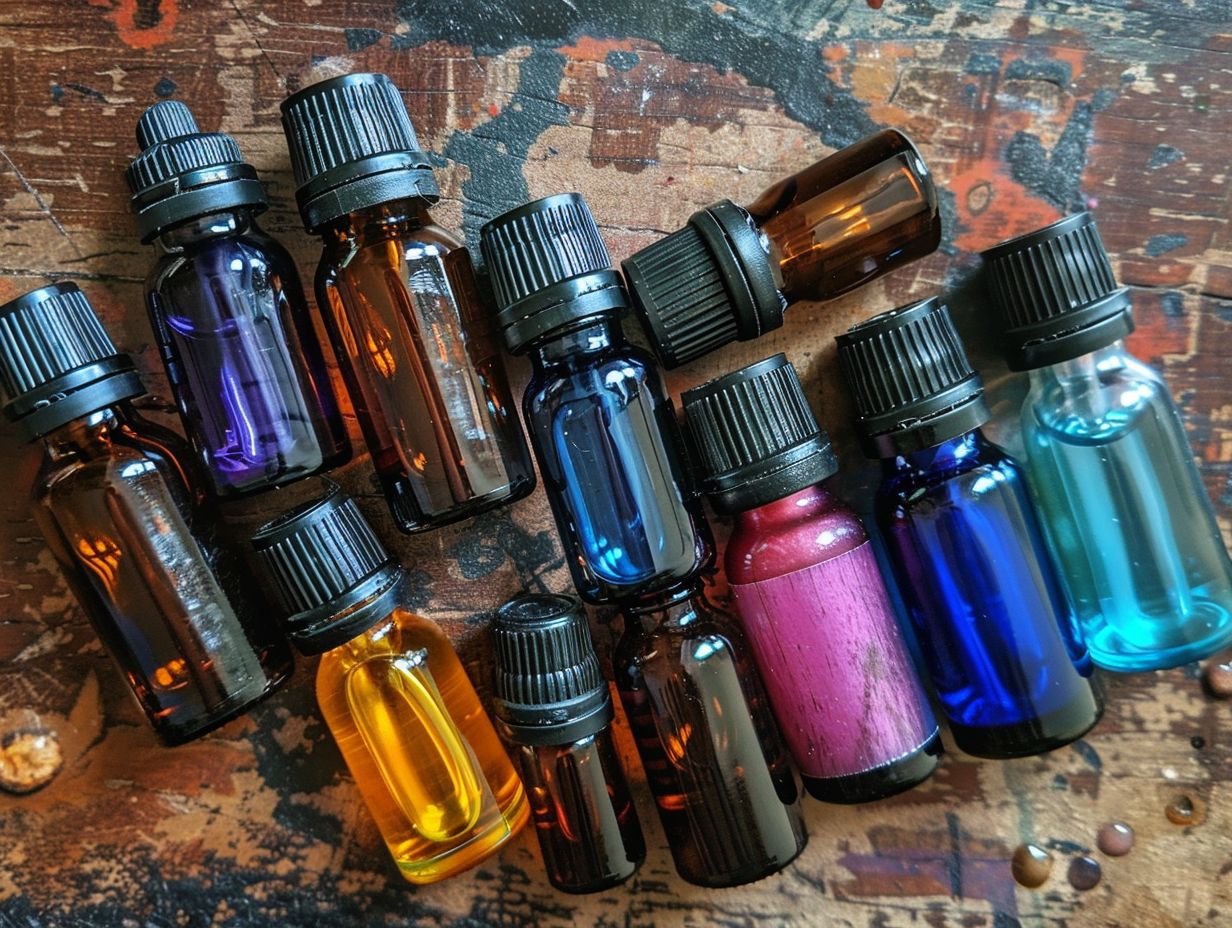
When essential oils are exposed to light, the delicate compounds within them are susceptible to degradation, altering their chemical composition and diminishing their potency. This can result in a reduction of both sensory appeal and therapeutic effectiveness, impacting the overall quality of the oils. To preserve the integrity of essential oils, it is crucial for companies to implement stringent quality control measures at every stage of the supply chain.
Quality checks should be conducted from sourcing raw materials to production, packaging, and distribution, ensuring that the oils are shielded from detrimental light exposure. Regional sales teams, such as Central Canada Sales, play a vital role in educating consumers about the significance of purchasing high-quality, properly stored essential oils, thereby fostering a deeper appreciation for the benefits these oils can offer.
What Are the Benefits of Using Dark Bottles for Essential Oils?
Using dark bottles for essential oils offers several benefits, including protection against light degradation and extending the shelf life of the oils.
Dark bottles, especially those made of amber-colored glass, are highly effective in shielding essential oils from harmful UV light. UV exposure can lead to oxidation and degradation of the oils, reducing their effectiveness and potency over time. By storing essential oils in dark bottles, you ensure that their therapeutic properties are preserved for longer periods.
These amber-colored glass bottles create a protective barrier that helps maintain the chemical composition of the oils. The dark hue of the glass blocks out light rays that can trigger unwanted chemical reactions within the oils, safeguarding their purity and efficacy.
To further enhance the longevity of essential oils, storing them in a protective carton display can provide an additional layer of defense against external factors. Carton displays offer extra insulation and shield the bottles from direct sunlight and temperature fluctuations, which can further help in preserving the oils’ quality and potency.
Protection Against Light Degradation
Dark bottles protect essential oils from light degradation by blocking harmful UV rays that can alter the chemical composition of the oils.
Carow Packaging utilizes cutting-edge manufacturing equipment to produce these essential oil bottles that are specifically designed to safeguard the delicate composition of the oils they contain. The advanced machinery allows for precise crafting of dark bottles that effectively shield the oils from any potential light-induced damage.
Quality control measures are integrated into the manufacturing process to ensure that every bottle meets stringent standards for protection and durability. The seamless coordination of innovative technologies and skilled craftsmanship results in packaging solutions that maintain the oils’ integrity and efficacy.
Extended Shelf Life
The use of dark bottles not only protects essential oils from degradation but also helps in extending their shelf life, ensuring that consumers receive products with optimal potency and efficacy.
Local distributors, like Steve, play a crucial role in the journey of these essential oils from production to your doorstep. They ensure that the oils are stored and transported under the right conditions, maintaining their freshness and purity. Without their dedication and expertise, the oils might not reach you in their best form.
Proper packaging is another essential aspect that contributes significantly to the longevity of essential oils. The dark bottles shield the oils from light exposure, preventing oxidation and degradation. This protective barrier, combined with the diligence of distributors, guarantees that you get oils that are potent and effective for a longer period.
What Types of Bottles Are Best for Storing Essential Oils?
Regarding storing essential oils, the best options are dark glass bottles that offer protection against UV light exposure and preserve the oils’ integrity.
Dark glass bottles, such as amber or cobalt blue ones, have the ability to prevent UV rays from penetrating and degrading the delicate compounds within essential oils, ensuring their potency and effectiveness over time. By shielding the oils from light, these bottles help prolong their shelf life and maintain their therapeutic properties.
The inert nature of glass ensures that it does not react with the oils, keeping them pure and uncontaminated. This is crucial in preserving the fragrance and efficacy of the oils, especially for sensitive blends and high-quality varieties.
Pairing these dark glass bottles with advanced dispensing systems, like dropper caps or pump tops, not only enhances convenience but also allows for precise control over the amount of oil dispensed. This prevents wastage and helps in accurate measurement, making it easier to incorporate the oils into various applications such as aromatherapy, skincare, or massage.
Amber Glass Bottles
Amber glass bottles are a popular choice for storing essential oils due to their ability to filter out harmful UV rays and protect the oils from degradation.
These amber glass bottles are also compatible with various advanced dispensing systems like the EuroDrop system, allowing for precise pouring and controlled dispensing of oils without any spillage or waste.
The amber color of the glass helps in maintaining the potency of the essential oils by limiting their exposure to light, thus preserving their therapeutic properties for longer periods.
Cobalt Blue Glass Bottles
Cobalt blue glass bottles are another excellent option for storing essential oils, offering similar UV protection and maintaining the oils’ quality.
These bottles are particularly favored for their ability to block a higher percentage of UV light compared to amber glass, ensuring the oils are shielded from light exposure that could potentially degrade their therapeutic properties. The dark blue hue of cobalt glass is not only aesthetically pleasing but also serves a functional purpose in preserving the potency of the oils inside. The strong relationships between manufacturers and local distributors play a crucial role in making high-quality cobalt blue glass bottles readily available to businesses and consumers, further enhancing the accessibility of premium packaging solutions.
Dark Green Glass Bottles
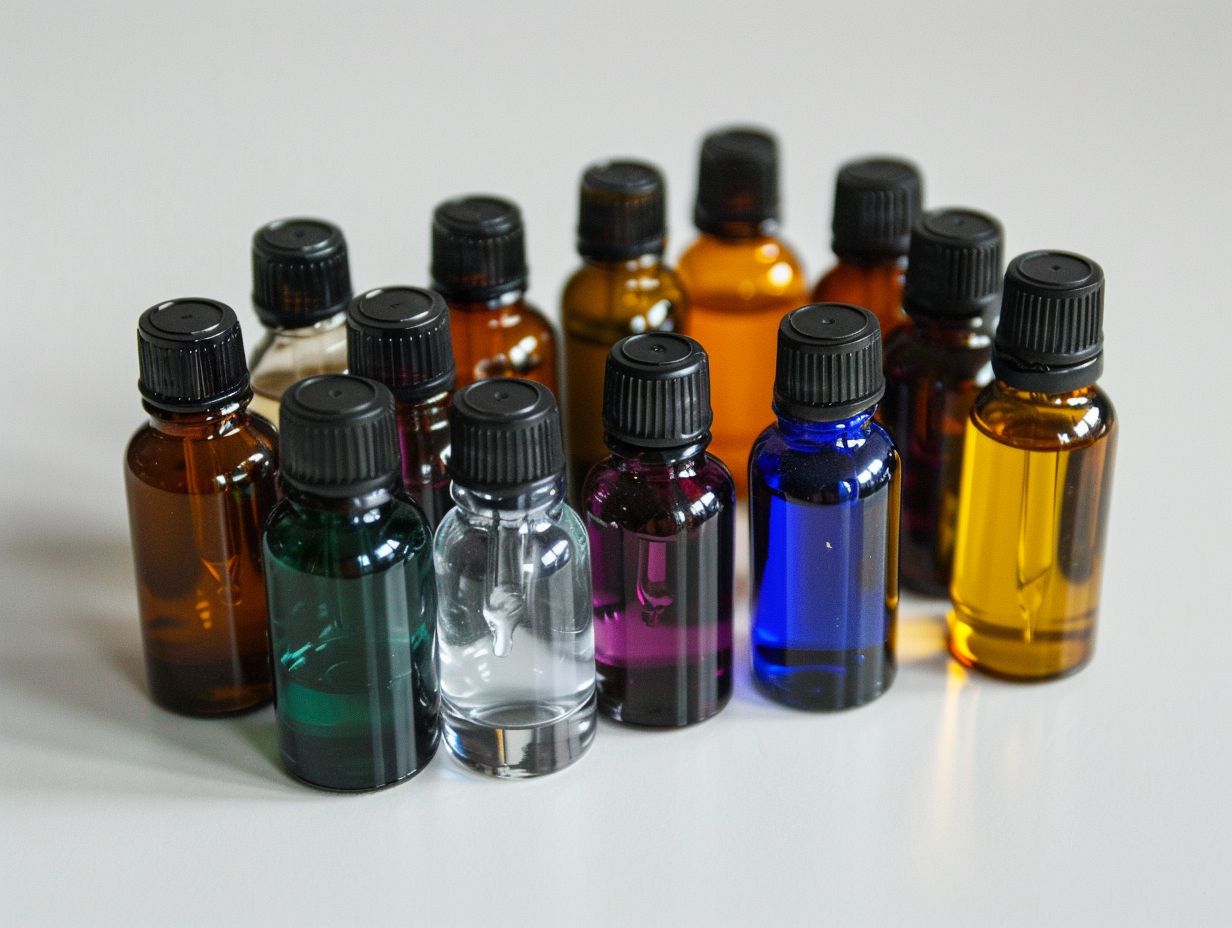
When essential oils are exposed to light, their chemical composition can be altered, leading to a decrease in quality and effectiveness. Dark green glass bottles act as a shield, blocking harmful UV rays and preserving the integrity of the oils. The inclusion of protective labels on these bottles serves as an added layer of defense against external elements that could compromise the oils’ longevity.
Manufacturers and distributors play a crucial role in the process of ensuring that essential oils are packaged in the most suitable containers. By collaborating closely, they can design packaging solutions that meet the specific requirements of different oils, considering factors such as light sensitivity, shelf life, and storage conditions.
Are There Any Exceptions to Using Dark Bottles for Essential Oils?
While dark bottles are generally recommended for storing essential oils, there are exceptions based on the stability and light sensitivity of specific oils.
For instance, citrus oils such as lemon or orange are less susceptible to degradation from light exposure compared to more photosensitive oils like chamomile or frankincense. In such cases, using clear or amber bottles can be considered as the oils do not require extensive protection against light.
The packaging and dispensing methods play a crucial role in ensuring the longevity of essential oils. Protective carton displays can shield oils from both light and temperature variations, offering an added layer of preservation.
Some Essential Oils Are More Stable Than Others
Certain essential oils exhibit higher stability and resistance to light degradation, making them less dependent on dark bottle storage for preservation.
For example, essential oils like Lavender, Frankincense, and Tea Tree are known for their inherent stability properties. These oils can withstand exposure to light and air better than others, making them ideal choices for products that are displayed openly or are packaged in clear containers.
Regional sales teams, such as the Central Canada Sales team, play a crucial role in promoting these stable essential oils to customers. By educating clients on the benefits of these oils, they help drive sales and create greater demand for these premium products.
Rigorous quality checks are imperative to maintain the integrity of stable essential oil products. By ensuring that only the highest quality oils are used and that proper storage and handling procedures are followed, companies can guarantee that customers receive potent and effective products that meet their expectations.
Some Essential Oils Are Light-Sensitive
Certain essential oils are highly sensitive to light exposure and require specialized packaging solutions to maintain their quality and efficacy.
Essential oils such as citrus oils, frankincense, and lavender are particularly prone to degradation when exposed to light, which can lead to reduced potency and altered fragrance compounds.
Properly designed packaging is essential to shield these oils from harmful light rays, thereby extending their shelf life and preserving their therapeutic properties.
Manufacturers play a crucial role in selecting the right materials for packaging, ensuring that they possess light-blocking properties without compromising the overall quality of the oils.
The collaboration between manufacturers and distributors is vital in implementing best practices for storing light-sensitive essential oils, including maintaining optimal temperature and humidity levels to prevent deterioration.
How Should Essential Oils Be Stored?
To ensure the longevity and effectiveness of essential oils, they should be stored in cool, dark places with tight-fitting caps and protected from heat and moisture.
Proper storage of essential oils is crucial to maintain their potency and therapeutic benefits. When essential oils are exposed to light, heat, or fluctuating temperatures, their chemical composition can be altered, leading to a reduction in quality.
Using glass bottles for storage is highly recommended as they do not react with the oils. Protective labels on the bottles help in identifying the oils and their expiry dates, ensuring you use them before they deteriorate.
Always seal the bottles tightly after each use to prevent oxidation and evaporation, which can compromise the shelf life and efficacy of the oils.
Keep in a Cool, Dark Place
Essential oils should be stored in a cool, dark place away from direct sunlight to prevent light-induced degradation and preserve their therapeutic properties.
When selecting storage locations for essential oils, it’s crucial to consider their sensitivity to light exposure. Exposure to sunlight can alter the chemical composition of the oils, diminishing their effectiveness over time. By storing them in a cool, dark environment, you minimize the risk of degradation and maintain the oils’ potency.
Using child-resistant caps can prevent accidental spills or exposure, especially in households with children or pets. These caps provide an extra layer of protection, ensuring that the oils remain securely sealed when not in use.
Establishing strong relationships with reputable manufacturers is also key. Manufacturers often provide specific storage guidelines tailored to their products. By following these recommendations, you can ensure that your essential oils are stored optimally, prolonging their shelf life and efficacy.
Use a Tight-Fitting Cap
Sealing essential oil bottles with tight-fitting caps is essential to prevent air exposure, which can accelerate oxidation and compromise the oils’ quality.
When essential oils are exposed to air or light, they are susceptible to degradation, losing their therapeutic properties and aromatic qualities. This is why ensuring a secure seal is crucial for maintaining the potency and effectiveness of the oils over time. Through the efforts of teams like Central Canada Sales, companies can guarantee that their products reach customers intact, thanks to their focus on providing reliable dispensing systems that offer optimal protection against external elements.
Avoid Exposure to Heat and Moisture
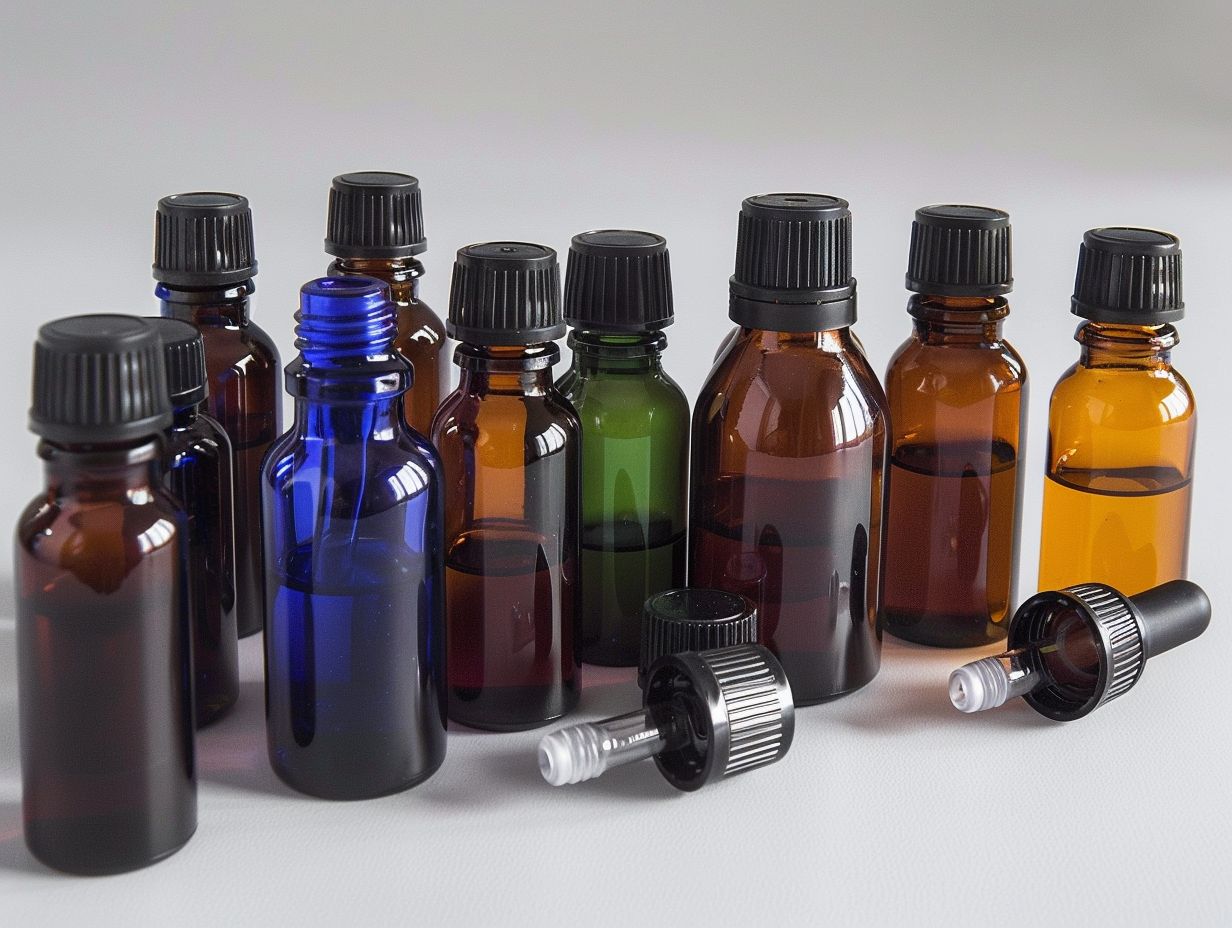
Essential oils are delicate compounds that can easily deteriorate when exposed to unfavorable environmental conditions like excessive heat and humidity. The EuroDrop system is a cutting-edge dispensing system that ensures precise and controlled release of essential oils, minimizing their exposure to external factors that could compromise their integrity.
By investing in high-quality manufacturing equipment and utilizing advanced technology, manufacturers can guarantee the purity and potency of essential oils throughout the production process. Innovative packaging solutions play a crucial role in protecting essential oils from oxidation, light exposure, and contamination, thereby extending their shelf life and maintaining their therapeutic properties.
Frequently Asked Questions
Do essential oils need to be stored in dark bottles?
Yes, it is recommended to store essential oils in dark bottles to protect them from light and heat.
Why do essential oils need to be in dark bottles?
Essential oils are sensitive to light and heat, which can cause them to degrade and lose their potency. Using dark bottles helps to preserve the quality of the oils.
What types of bottles are considered ‘dark’ for storing essential oils?
Dark bottles for essential oils are typically made of amber or cobalt blue glass, which help to block out UV light and protect the oils inside.
Do clear bottles offer the same protection as dark bottles?
No, clear bottles do not offer the same level of protection as dark bottles. They allow light to penetrate and can cause the oils to deteriorate faster.
Can I store essential oils in plastic bottles?
No, plastic bottles are not recommended for storing essential oils as they can react with the oils and alter their chemical composition.
How should I store my essential oils if I don’t have dark bottles?
If you don’t have dark bottles, you can store your essential oils in a cool, dark place such as a cupboard or drawer. Keep them away from direct sunlight and heat sources to help preserve their quality.

